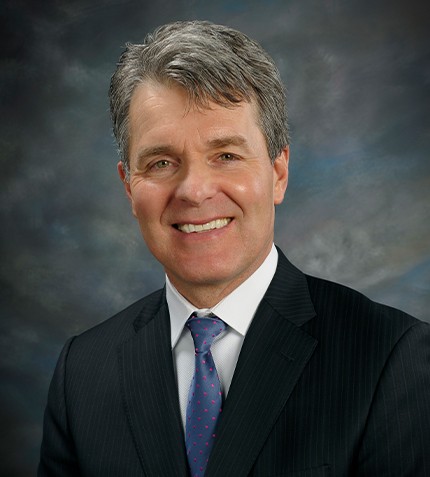
"Clean Air Metals realizes that the basket of metals we have at our Thunder Bay North project are on point for the direction that the world needs to go."
Abraham Drost
CEO, CLEAN AIR METALS
Can you explain the usage and advantage of platinum versus palladium?
Palladium has seen its most efficient use as a principal metal for catalytic conversion of harmful exhaust gases in gas burning internal combustion engines (ICE) and gasoline-hybrid electric vehicles. Platinum is the metal of choice in diesel burning internal combustion engines, however with the trend moving sharply away from diesel fuel use, platinum has somewhat fallen out of favor. The climate change imperative has set a strong push towards continued de-carbonization and clean energy transportation solutions. In this context, we believe platinum is a potential metal of choice in the medium to long term. Platinum is not only a precious metal with demand from the jewelry and catalytic conversion markets, but is also the element of choice for anode and cathode construction in the increasingly mainstream hydrogen fuel cell market. Platinum may be seen as the metal of the future in terms of its green energy applications and also in primary electrolysis of water to form green hydrogen and oxygen. Hydrogen is a completely carbon free and abundant source of energy.
It is only with platinum as anode and cathode that as hydrogen and oxygen are combined in a fuel cell, electrons are freely released to a battery and water (H2O) is the waste byproduct. We note that non-PGE metals typically produce undesirable hydrogen peroxide (H2O2) as a waste byproduct. As the lowest-cost PGE metal presently, we believe that platinum has a strong growth trajectory in the burgeoning hydrogen transportation market. Platinum, palladium, and rhodium markets are potentially supply constrained. Palladium, because of increasingly more stringent emission standards has been profoundly short, so prices have risen to over US$2,000 per ounce. Platinum while in balance in the present markets, may come increasingly into short supply given its importance in the clean energy sector.
How will Clean Air Metals be taking part in the green revolution, and can you highlight some developments at the company’s projects?
Clean Air Metals recently published a base case Preliminary Economic Assessment (PEA) on the Current and Escape deposits of the Thunder Bay North Project near Thunder Bay, Ontario returning a post-tax NPV5 of C$293m and 25.2% IRR. A total mill feed of 12Mt at 7.3g/t PtEq at a cash cost of C$86.61/t milled is projected to produce payable metals of 629 k oz Platinum, 618 k oz Palladium, 111 M pounds Copper, 57 M pounds Nickel, 38 k oz Gold, 850 k oz Silver (2,886koz PtEq) over a 10-year LOM. Exceptional grades provide a 59% operating margin in the first 5-years of production, offering a rapid 2.6-year payback on initial capital costs of C$367m, which includes a >20% contingency allowance. Clean Air Metals understands that the basket of metals at the Thunder Bay North project is uniquely positioned to support the clean energy direction that the world needs to go.
How do you see the reduction of emissions versus the need for fossil fuels to keep the green revolution going panning out, and does one offset the other?
It is all about balance. There is room to grow on the green energy side and targets set around emission reductions are achievable in a balanced and orderly manner. The energy transition cannot happen overnight as we observe that the entire world is still very dependent on hydrocarbons for basic energy and heating requirements. The energy crisis in Europe over this winter underscores this reality. For example, Norway still relies heavily on its hydrocarbon economy, but is taking a leading role in developing green energy initiatives as they realize that long term, the clean energy transition must and will take place. The world has become increasingly more urban and we have large cities and populations to service. The problem is that we cannot all go back to living on the farm and growing vegetables, being almost self-sustainable. With urbanization comes the need for waste, water and sanitation services and lifestyle options that require reliable electricity on demand. Although people are willing to sacrifice to some extent for the planet, lifestyle demands will not change dramatically as power consumption shifts to more sustainable, renewable, clean energy solutions.
Can you elaborate on Clean Air Metals’ community relations and engagements?
During COVID, we have been in consultations via virtual platforms and continue to actively engage with local First Nations, municipalities, and other stakeholders. This exercise is being carried out with integrity and respect to establish positive and constructive participatory relationships. Clean Air Metals is committed to continual and meaningful engagement with First Nations and Metis communities as well as other stakeholders to develop our project in a sustainable way. The Board of Directors and management at Clean Air Metals are focused on building and maintaining a positive health and safety culture and maintaining the highest standards of operational integrity.










